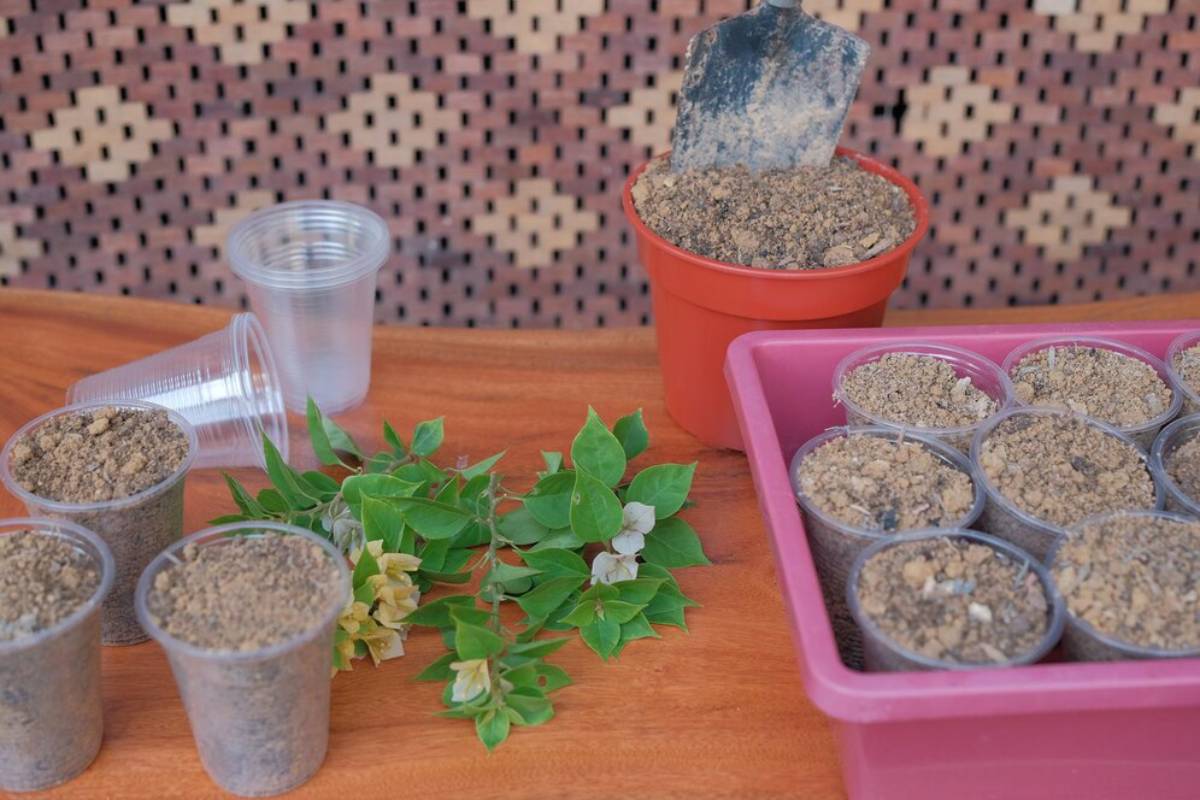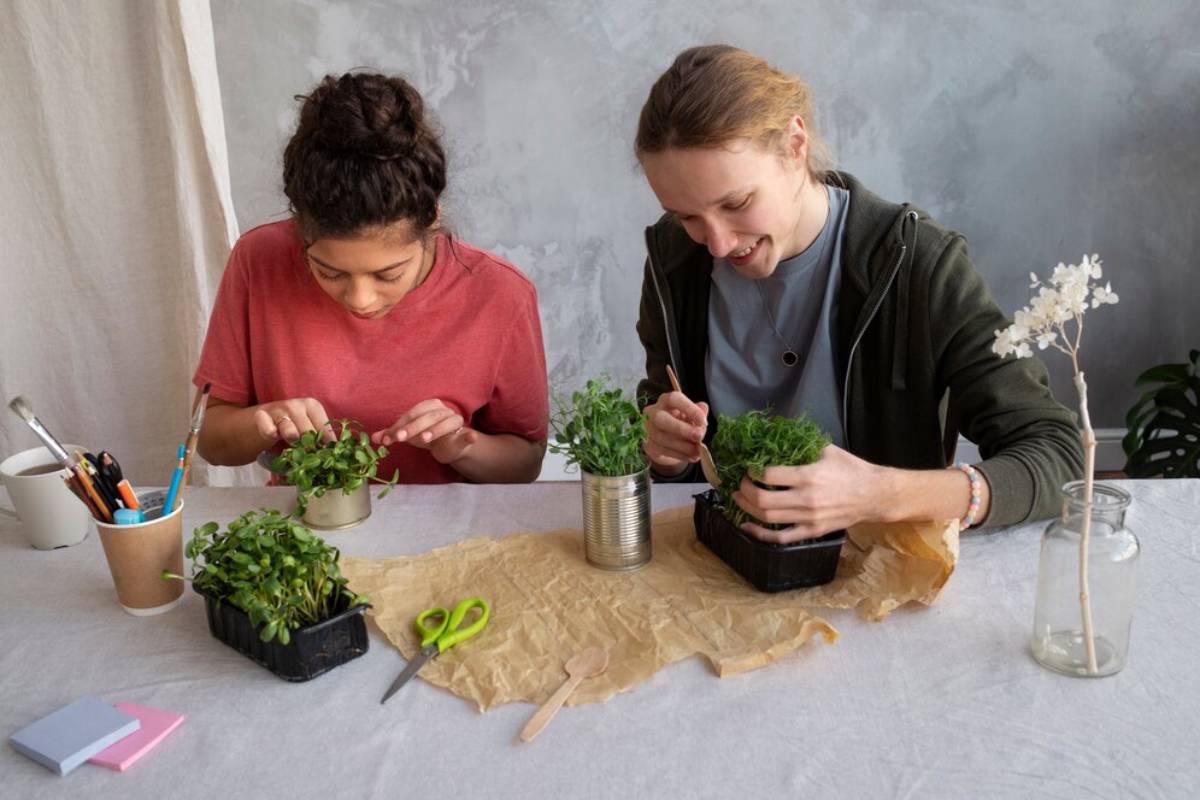
DIY Planters from Recycled Containers: Embracing Eco-Friendly Gardening
Co-living is when clusters of like-minded people live together in a shared building or community. From in-home movie nights to community meals, CCRs offer various experience-driven living options for those wanting to save money while being sustainable. There is also a growing desire among more people to reduce their environmental impact. One great way to achieve this way of life is DIY gardening. You could start with planters made from recycled containers, for example. This will help with waste reduction and give your garden a unique look. In this post, we are going to discuss about recycled planters. We will discuss the benefits, offer expert tips, and provide insights into creating your own upcycled garden crafts.
The Importance of DIY Planters from Recycled Containers
Gardening is a therapeutic and fulfilling activity that connects us with nature. However, traditional gardening practices can sometimes contribute to environmental degradation. For instance, the use of new plastic pots adds to the plastic waste problem. By opting for DIY planters made from recycled containers, you contribute to a circular economy where products are reused and repurposed, reducing the demand for new materials.
Creating recycled planters is not just about sustainability; it’s also about creativity and personalisation. Each planter tells a story, reflecting the ingenuity and resourcefulness of its creator. Moreover, these planters can be tailored to fit any garden aesthetic, from rustic charm to modern minimalism.
Key Benefits of Recycled Planters
Environmental Impact
The primary benefit of using recycled containers for planters is the positive environmental impact. By repurposing items that would otherwise end up in landfills, you reduce waste and conserve resources. This practice supports the principles of recycling and sustainability, which are crucial in combating climate change.
Cost-Effectiveness

Gardening can be expensive, especially when purchasing new pots and planters. Recycled planters offer a cost-effective alternative, allowing you to allocate your budget towards other gardening essentials, such as high-quality soil or seeds.
Unique Aesthetic Appeal
Recycled planters provide a unique aesthetic appeal that store-bought options cannot replicate. Whether a vintage teapot, an old boot, or a cracked ceramic vase, each container adds character and charm to your garden space.
Educational Value
Creating DIY planters from recycled containers can be an educational experience for families. It teaches children the importance of recycling and sustainability, instilling eco-friendly habits from a young age. Moreover, it encourages creativity and problem-solving skills as they brainstorm new uses for old items.
Getting Started with DIY Gardening
Choosing the Right Containers
The first step in creating recycled planters is selecting suitable containers. Look around your home for items that are no longer in use. Standard options include plastic bottles, tin cans, glass jars, and wooden crates. Ensure that the containers are clean and free of any hazardous substances.
Preparing the Containers
Once you have selected your containers, the next step is preparation. Drill or punch holes in the bottom of the containers to allow for proper drainage. This is crucial to prevent waterlogging, which can damage plant roots. If the container is made of a material that cannot be drilled, consider using a layer of stones or gravel at the bottom to facilitate drainage.
Selecting the Right Plants
The choice of plants will depend on the size and type of your container. For smaller containers, consider herbs or succulents, which require less space and are relatively low-maintenance. Larger containers can accommodate a variety of flowering plants or even small vegetable plants.
Expert Tips & Common Mistakes to Avoid
Best Practices for DIY Gardening

When creating recycled planters, it’s essential to consider the longevity and durability of the materials used. For instance, metal containers may rust over time, while wooden containers may rot if not treated properly. Applying a protective sealant can help extend the life of your planters.
Additionally, consider the placement of your planters. Some materials may overheat in direct sunlight, affecting plant growth. If you use containers like tin cans, ensure they are placed in a shaded area or lined with insulating material.
Common Mistakes and How to Avoid Them
One common mistake is neglecting plants’ drainage needs. As mentioned earlier, proper drainage is crucial for healthy plant growth. Another mistake is not considering the planter’s weight, especially when using heavy materials like glass or ceramic. Ensure that your chosen location can support the weight of the filled planter.
Furthermore, avoid overcrowding plants in a single container. While creating a lush, complete look may be tempting, plants need space to grow and thrive. Overcrowding can lead to competition for nutrients and water, stunting plant growth.
Advanced Insights and Expert Recommendations
Innovative Upcycling Ideas
Consider incorporating innovative upcycling ideas for those looking to take their DIY gardening to the next level. For instance, an old ladder can be transformed into a vertical garden by attaching multiple small planters to its rungs. Similarly, an unused dresser can be repurposed into a tiered garden by filling its drawers with soil and plants.
Incorporating Technology
Technology can also enhance your recycled planter projects. Consider using moisture sensors to monitor your plants’ watering needs, ensuring they receive the right amount of water. Additionally, solar-powered lights can be incorporated into your planters, creating a beautiful illuminated garden display in the evenings.
Embrace Creativity and Sustainability
Recycled containers can be as cute as they are creative and eco-conscious, especially when you make your DIY planters. Giving new life to things that could languish in the garbage contributes to a more sustainable future. It also brings a unique approach to your garden.
As you begin your DIY gardening project, don’t be afraid to try out various materials and fabrics to get the desired look! There is no end to the possibilities out there, and with every project, there is something new to be learned. Gather your recyclables. Harness your imagination to transform your garden. Make it a symbol of sustainable living.
Are you ready to start your own upcycled garden crafts? Share your creations with us and inspire others to join the movement towards eco-friendly gardening.